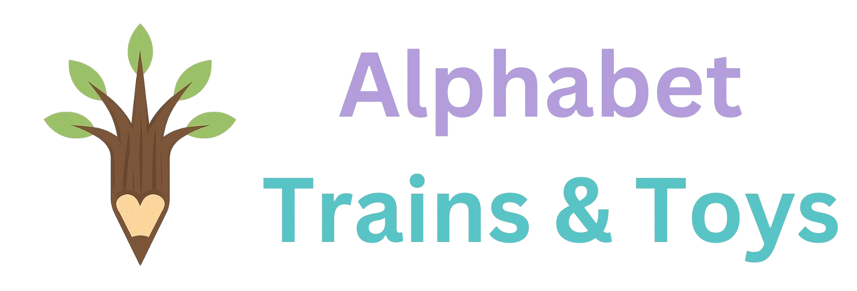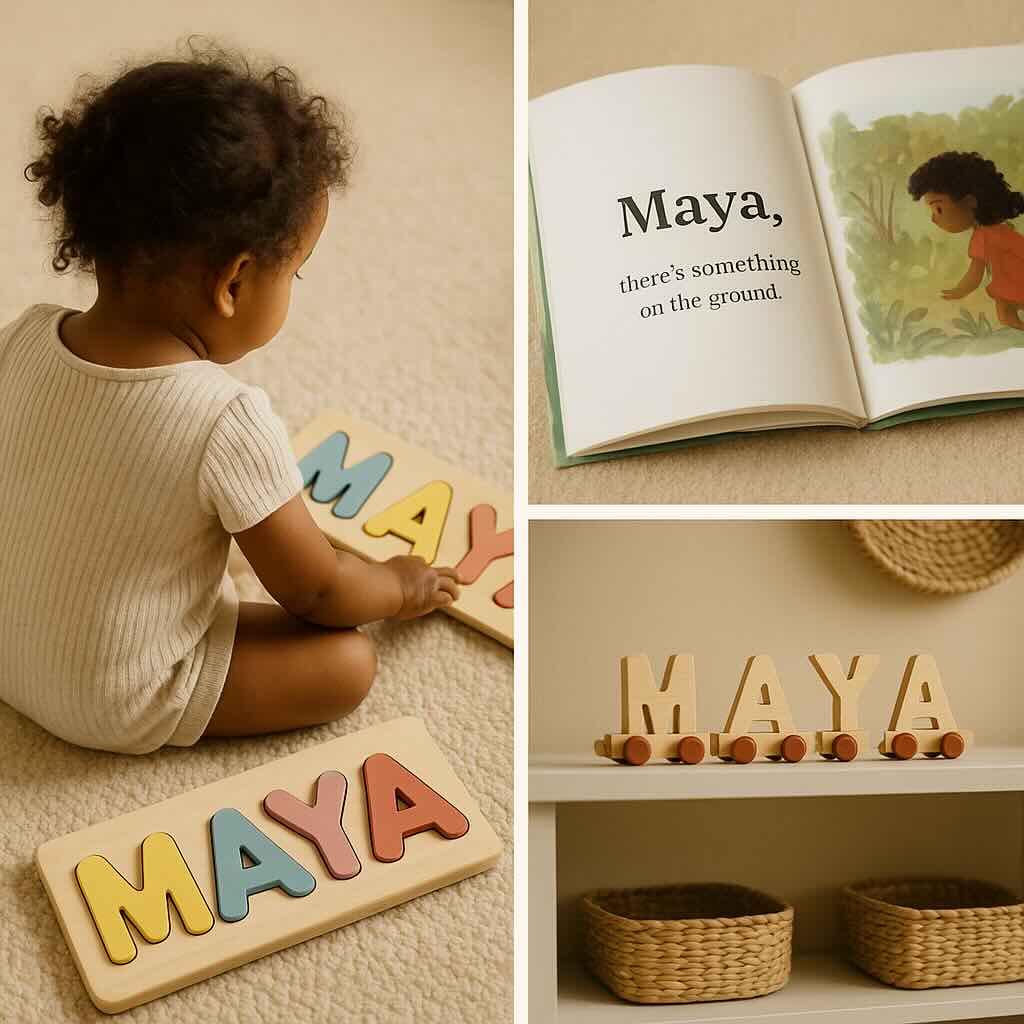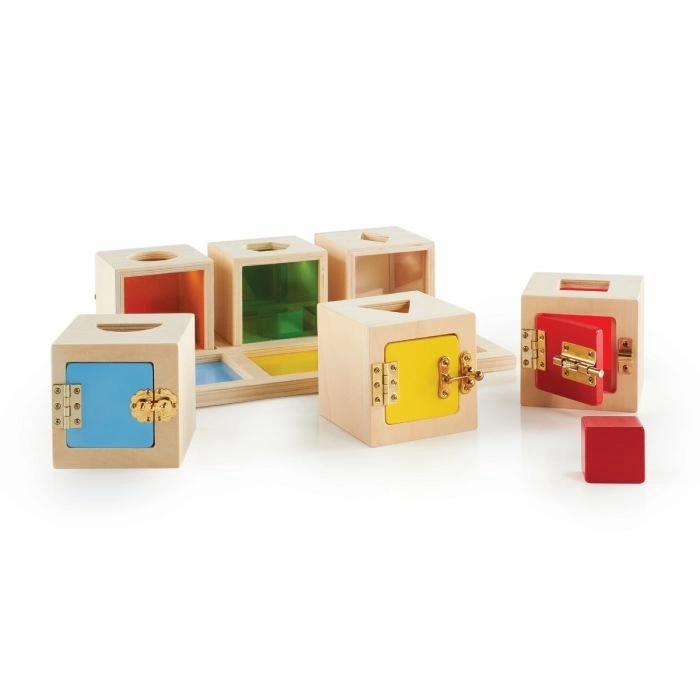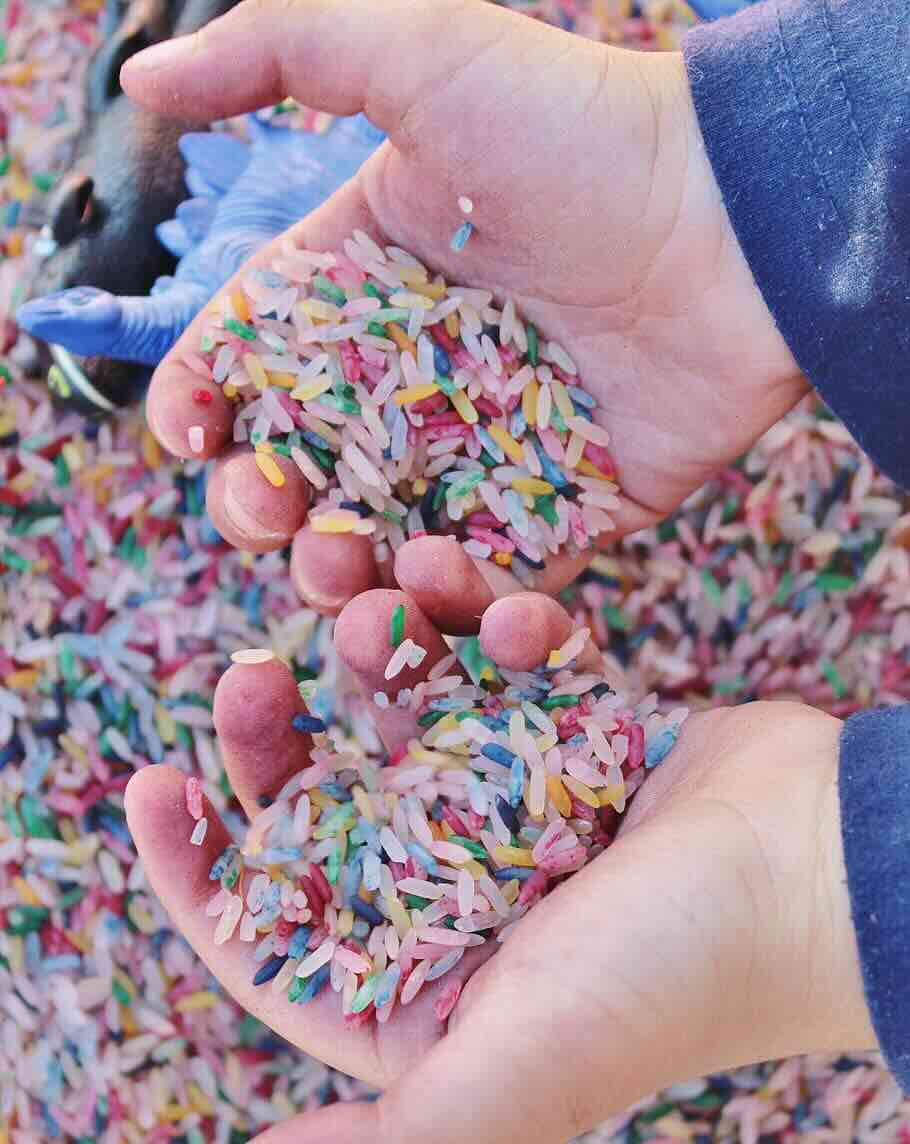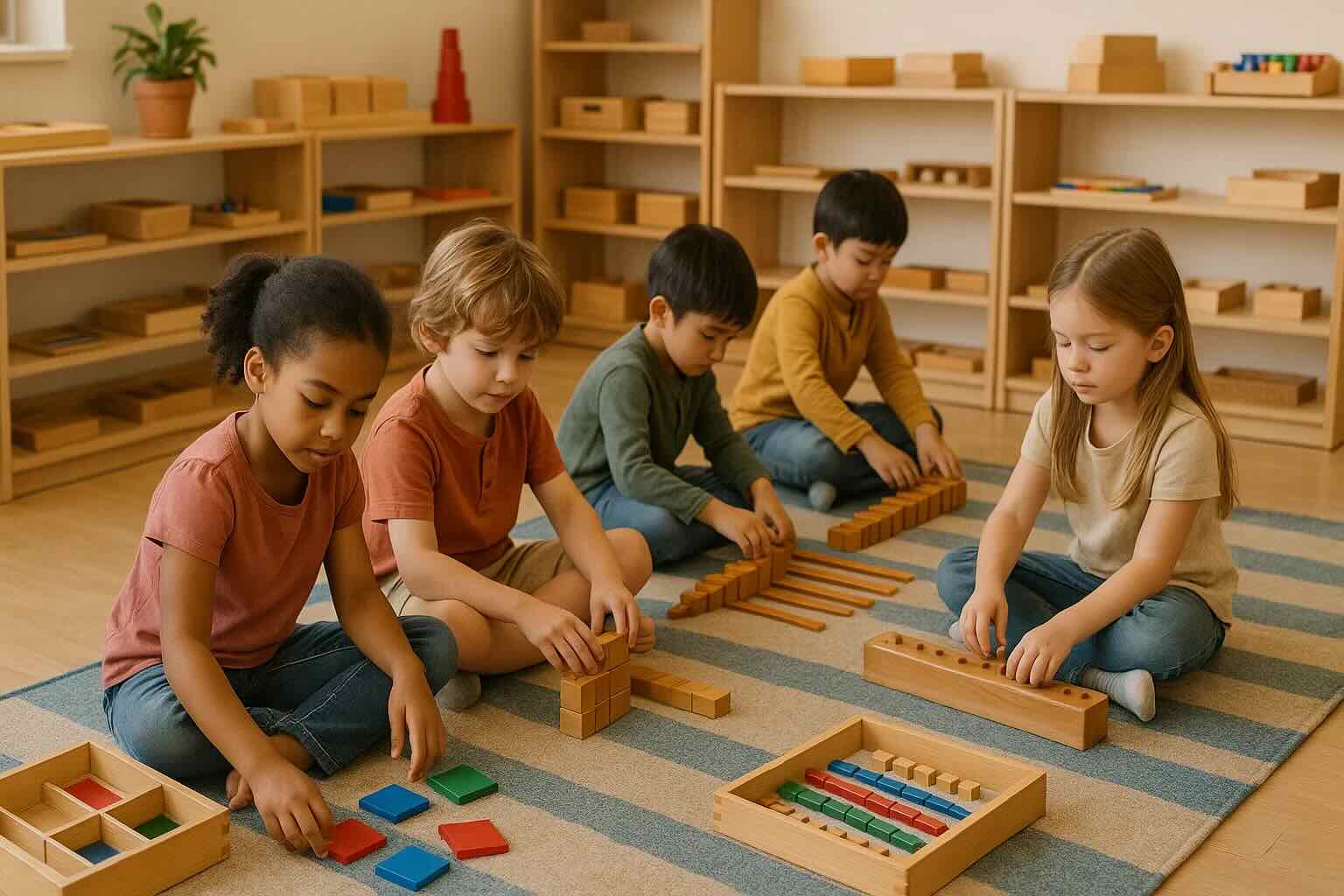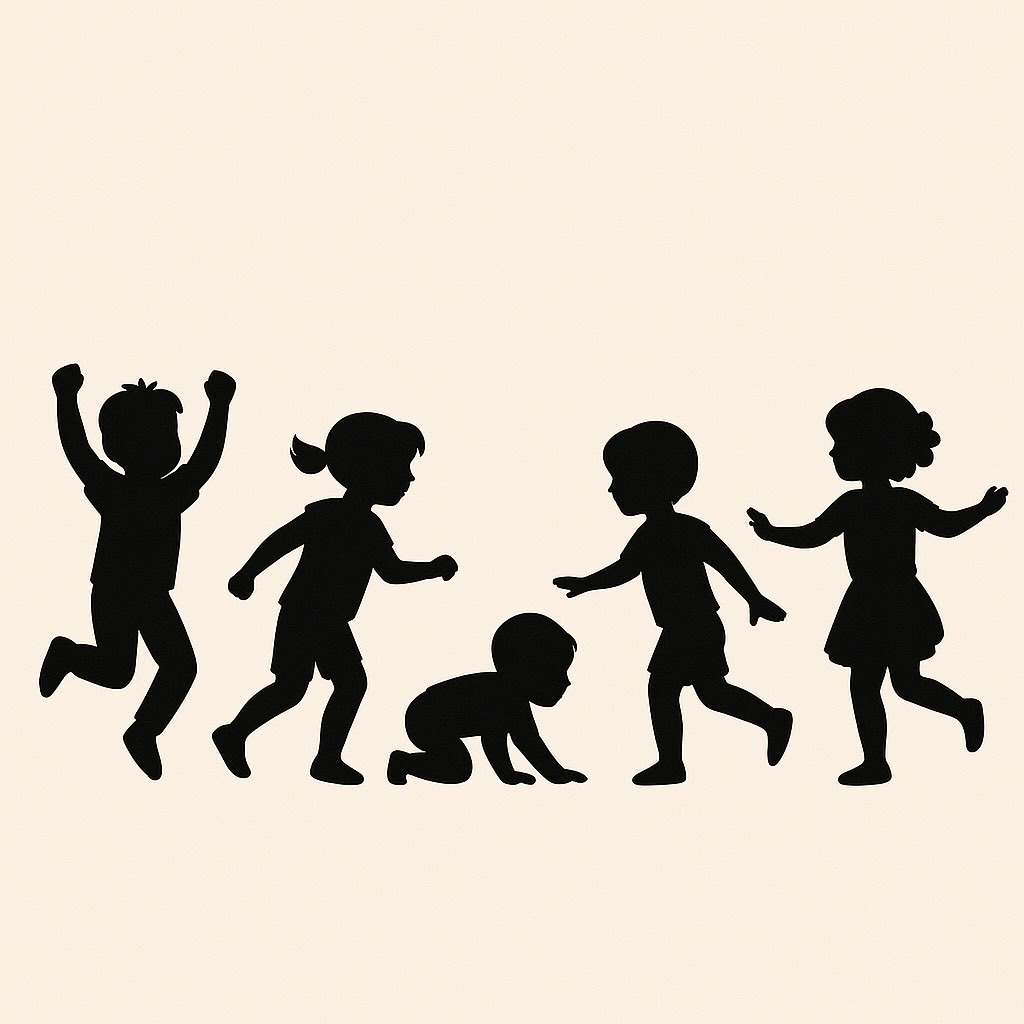The Neuroscience of Personalized Learning in Early Childhood
Why your child's name is their secret learning superpower
This is a little bit more dry of an article than my usual because there is a lot of science behind it. But please bear with me as I try to explain the science behind your child's name recognition process. When I was expecting my daughter Ava, I was full of curiosity. Even though it'd been 3 years since I started teaching, I knew that I didn't know anything about babies. I read every book I could think of, what to expect at each prenatal phase, month, or even day. What to do after birth and what to expect. But none of these prepared me with the actual wonder of holding my daughter in my arms the first time, or the second, or the 100th. But what I wish I had known then was the incredible science happening in her developing brain every time she heard her name.
It was much later, when I was expecting my second child, that knowing all the things I knew from actual parenthood (and the fact that I could now learn anything online 😛) that I really started investigating the science behind early development.
With Ava, I had always noticed her face light up whenever she heard her name, but I never knew it was because her developing brain was having a party with all the stimuli and her name had a special place there as a guest of honor.
🧠 Did You Know?
Your child's name can activate brain regions tied to attention and self-recognition - even before 6 months of age!
Your Child's Name: Nature's Perfect Learning Tool
It turns out that your child's name is neurologically special. In fact, it's often the first word infants recognize, as early as 4 to 5 months of age. It's also typically one of the first words children learn to spell, and it triggers unique patterns of brain activity. Brain scans show that when we hear or see our own name, specific areas light up - the parts that control attention and help us think about ourselves.
💡 Neuroscience Insight
Hearing one's name boosts neural activity in the prefrontal cortex and self-processing regions.
When kids see and recognize their name on a puzzle or toy, their brain perks up. This recognition makes it easier to engage with and absorb the educational material that follows. It's like learning to drive in your own neighborhood versus a foreign city - same skill, far less mental overhead when the context is familiar.
The Amazing Early Childhood Brain
Here's something wild: between birth and age 3, a child's brain forms an estimated 1 million new neural connections every second. This is what scientists call a "critical period" for brain development - when experiences literally shape the architecture of the mind. I have not only seen it in some of the toddlers in my classroom, but I've also experienced it first hand with my kids.
📈 Critical Window
Early personalized engagement helps wire emotional, memory, and language circuits permanently.
Interestingly, the brain follows a powerful rule: "use it or lose it." Neural pathways that get repeated use become stronger; those that don't get pruned away. Engaging with meaningful, familiar stimuli - like their own name - reinforces networks in our brain that are related to language, memory, attention, and emotional learning.
So how do personalized products actually help your child?
How Personalized Products Actually Help Brain Development
📚 Personalized Storybooks: The Star of Their Own Show
One of the earliest items you can share with your child that not only helps them learn and fall in love with their own name, but also make a lasting impact on their life is a story that is customized with their name. Imagine a book where your child's name appears on every page. You can imagine how your baby will react even at 4-5 months of age, when you are reading them a bedtime story and they hear their name throughout the story. Psychologists have long documented the self-referential effect - we process and retain information better when it relates to ourselves. When your child is the hero of a story, their brain engages more deeply with the content.
This leads to:
- Increased vocabulary development
- Better comprehension
- A stronger emotional connection to reading, not to mention a stronger parent-child bond
These aren't just cute keepsakes - they're actually foundational tools for building lifelong love of learning and literacy.
📖 Try This
Choose a storybook that places your child's name on every page - repetition builds recognition and confidence.
🛏 Personalized Blankets: Comfort That Builds Self-Concept
My Ava, had a strong attachment to her Mr. Blankie. She wouldn't sleep or go anywhere without this blanket buddy with the funny looking goat-head, which my mother had knitted for her and insisted that wasn't a goat-head but a teddy bear. Aside from the sentimental value of having been knitted by my mom, ever since Ava started crawling, she'd carry this blanket with her everywhere!
According to science, comfort items like blankets or soft toys play a role in emotional regulation, which is vital for learning readiness. While personalization alone hasn't been studied as a causal factor, seeing one's name repeatedly in comforting contexts can help reinforce identity development and positive associations with learning environments.
As babies turn to toddlers, there are more options for personalization, especially materials that perfectly align with the Montessori method. For parents unfamiliar with this approach, the Montessori method emphasizes hands-on, child-led learning that builds independence and confidence. For a comprehensive guide on choosing the right personalized educational toys for your child's development, check out our Montessori Educator's Guide to Personalized Educational Toys.
🧒 Montessori Match
Personalized comfort items promote independence, identity, and emotional self-regulation.
🧩 Name Puzzles: Building Cognitive Skills Block by Block
A lot of toddlers in my class already know the letters of their name when they join my class. The first time I saw one of these kids I was naively impressed. At two and a half, Jonathan knew every letter of his name, albeit, he couldn't put all of them together to spell it yet. Impressed, I asked his mom when she picked him up from school. She smiled and told me about his wonderful Name Puzzle board that his favorite uncle had gifted him on his second birthday. Within 6 months, with some help from mom, and uncle, Jonathan had learned to associate certain letters to his name. He was a few months shy of three when he could easily spell his name using our classroom magnetic alphabet letters.
When your child works with a name puzzle, they're not just playing - they're exercising:
- Fine motor control (grasping letter pieces)
- Visual-spatial reasoning (figuring out where letters go)
- Memory (recalling the sequence of letters in their name)
- Problem-solving (fitting pieces in place)
Research supports that visual and spatial enrichment in early environments improves pattern recognition and higher-order thinking. A name puzzle provides this enrichment in a personally meaningful way.
🧩 Why It Works
Name puzzles develop sequencing, memory, and tactile recognition - all foundational literacy skills.
One of the reasons I was so excited to collaborate with Alphabet Trains and Toys was the next personalized toy that I am going to talk about, the famous Name Train.
🚂 Name Trains: All Aboard the Learning Express
As your child connects letter cars in the correct order, they practice:
- Letter sequencing
- Left-to-right visual tracking (an important pre-reading skill)
- Attention and focus
While no formal studies exist specifically on name trains, these skills are foundational for early literacy and are enhanced when presented in familiar, engaging formats.
I can tell you from my personal experience that toddlers love playing with these cute toys. They are completely safe, having been made and safety tested locally in the US. Each letter connects to the next with safe magnets. Preschoolers love it when they play experimenting with the poles of the magnets, alternating between attracting and repelling other letters.
🚀 STEM-Ready Play
Magnet trains introduce polarity, connectivity, and problem-solving while reinforcing literacy.
The Multi-Sensory Learning Advantage
Throughout my career as an educator, I've learned that children learn best when multiple senses are activated together. Multisensory learning (visual, tactile, auditory, emotional) boosts attention, memory, and concept retention. Personalized items naturally engage several senses at once:
- Visual: Seeing their name
- Tactile: Manipulating puzzles or soft objects
- Auditory: Hearing their name spoken during play
- Emotional: Feeling pride, comfort, and excitement
🖍 Creative Development
Personalized coloring books boost fine motor skills, creativity, and name recognition through art and self-expression.
Why Personalized Beats Generic (Sometimes)
Don't get me wrong, generic educational toys are useful, but personalized ones may reduce the cognitive load involved in interpreting unfamiliar content - leaving more bandwidth for learning the actual skill. Familiarity breeds efficiency and motivation, especially in toddlers still forming basic neural networks.
That said, it's not that generic toys are bad - it's that personalized materials, when well-designed, create a learning environment tailored to your child's brain. They combine attention, emotion, and repetition - all the key ingredients for deep learning.
Making Smart Choices for Your Child
🧠 Start Simple
Begin with a name puzzle or soft book, then build up to personalized stories or alphabet toys as skills develop.
🎯 Prioritize Developmental Goals
Don't choose personalization just for aesthetics. Look for toys that reinforce real milestones: fine motor skills, sequencing, language, etc.
👶 Quality Over Quantity
One thoughtfully designed personalized toy is better than a bin of noisy, generic plastic.
👀 Watch What They Gravitate Toward
Your child will show you what resonates. Follow their interests - it's usually a sign their brain is "ready."
🪓 Independence Builder
Personalized step stools foster self-reliance, spatial awareness, and confidence in daily tasks.
The Bottom Line: An Investment in Brain Development
As I've said several times throughout this article, when you choose personalized learning tools, you're not just buying a cute product - you're supporting your child's natural neural growth. Research shows that the early years are a time of rapid cognitive and emotional development, and learning materials that are emotionally engaging, personally relevant, and multi-sensory help make the most of that window.
So the next time your child lights up at the sight of their name, smile big. That moment of joy? That's learning in action.
🌟 Remember
Personalized tools aren't just fun - they're brain boosters when it matters most.
